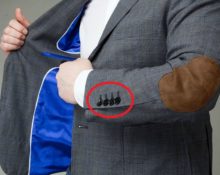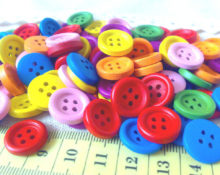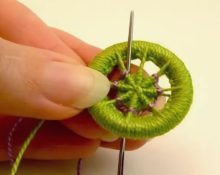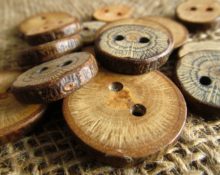Buttons have become such a part of human life that we only notice them when we lose them. We don’t even think about where they come from on clothing, or what path they take before being sewn on a placket or cuff. Our story is about all this.
How are buttons made in a factory?
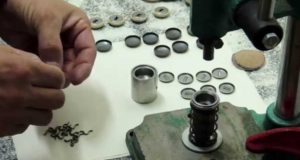 Buttons were invented to fasten men's clothing more than a thousand years ago. Over time, they began to be produced for ladies' dresses. These were not only fastener elements, but, above all, unique jewelry produced individually for the clothing of noble and wealthy people using expensive materials and precious stones.
Buttons were invented to fasten men's clothing more than a thousand years ago. Over time, they began to be produced for ladies' dresses. These were not only fastener elements, but, above all, unique jewelry produced individually for the clothing of noble and wealthy people using expensive materials and precious stones.
Now they are made in a factory from various compositions of plastic resins. Wooden and metal fittings are slightly less common, and clasps made of animal horns, porcelain, glass, seashells, and semi-precious raw materials are even less common. Various colors, shapes, sizes, thickness - there are a huge number of options for all this.You can choose the appropriate accessories for any clothing.
Before reaching the store, plastic products go through a rather complicated path, the initial stage of which is the production of sheet buttons:
- it all starts with workers mixing polyester resin with a catalyst;
- then this composition is sent to a drum, which, when rotated, ensures uniform distribution of the solution and its spraying to obtain the first layer of ultraviolet pigment.
Important! Button craftsmen work in production: pressers and stampers of plastic products, plastic casters on thermo-automatic machines. This is what these professions are called.
Manufacturing of blanks
Work on creating buttons continues:
 workers make grooves in the viscous material to create a pattern;
workers make grooves in the viscous material to create a pattern;- when the raw material thickens after 5 minutes, the next layer is applied, it may be of a different color. With the help of this mass, the sheet becomes thicker, the grooves of the lower layer are filled, and a contrast of two colors arises;
- after the second layer has hardened, the third layer is applied in the same way, and after some time - sometimes the fourth layer;
- a sheet that is hard enough to make blanks and moderately flexible to maintain its shape under mechanical stress is removed and placed under a press;
- Then the circles are automatically knocked out - button blanks, which are called “rondelle”. Their diameter must correspond to the size of the fittings being produced;
- The transformation of the workpiece into a button occurs on a multi-purpose machine.
Workpiece processing
The machine places the received workpieces on a circular conveyor, feeding them with the inner side up. The mechanism distinguishes the location of the ultraviolet solution frozen in the first layer, checking that everything is lying the right way.If the location is incorrect, the workpiece is reset and loaded again.
After this, several cutters process the rondel from the back until it becomes convex. The process then continues on the face of the workpiece, where the cutters also work, sharpening the layers to create a veined effect. The very last stage of the cutters’ work is punching a hole for the threads.
Important! Buttons on the stem are produced by sawing out the eye, so part of the raw material goes to waste, which increases the cost of this type of fittings.
Filtration
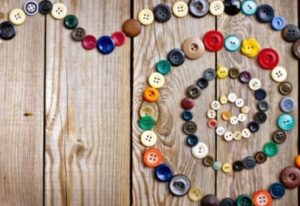 All buttons are loaded into a drum and polished for 14 hours. Pieces of pumice and ceramic chips are used as abrasives.. At the end of the work, the drum is filled with water, all suspensions remain at the bottom, and the buttons rise up and are removed. In another drum, the fittings are processed with silicone wax and pieces of wood.
All buttons are loaded into a drum and polished for 14 hours. Pieces of pumice and ceramic chips are used as abrasives.. At the end of the work, the drum is filled with water, all suspensions remain at the bottom, and the buttons rise up and are removed. In another drum, the fittings are processed with silicone wax and pieces of wood.
How are non-round buttons made?
The fittings can be of completely different shapes: round, square, oval, diamond-shaped, triangular, rectangular, flower-shaped, heart-shaped, berry-shaped, and other unusual shapes and complex designs. To make such a button, a sketch is created in production, then a template is developed, then the master produces the required number of accessories by hand pouring. This method can also be used to produce buttons with beads, rhinestones, and various decorative elements.
Is it possible to make buttons with your own hands?
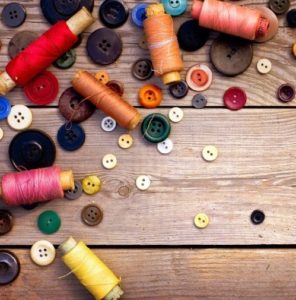 Nowadays the handmade trend is very popular, in which things are created with your own hands. You can also make buttons yourself. Craftswomen working on ideas for original fittings come up with interesting, original designs and solutions in different colors from various raw materials.
Nowadays the handmade trend is very popular, in which things are created with your own hands. You can also make buttons yourself. Craftswomen working on ideas for original fittings come up with interesting, original designs and solutions in different colors from various raw materials.
In addition to the generally accepted materials for making buttons: plastic, metal, wood, glass and mother-of-pearl shells,— home masterpieces can be sculpted from polymer clay, leather, velvet, chiffon, brocade, plastic, epoxy resin.
Step-by-step guides and master classes are easy to find on the Internet, and materials for work can be found in nearby stores. Once you reach a certain level of skill, you can take orders or gift unique accessories to your family and friends.


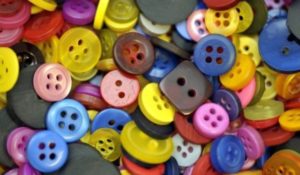 workers make grooves in the viscous material to create a pattern;
workers make grooves in the viscous material to create a pattern; 1
1